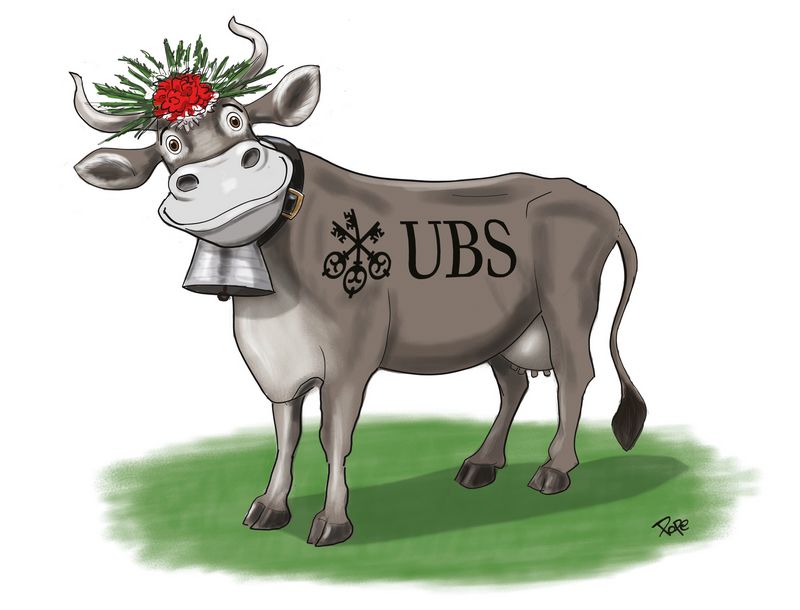Swiss champion
In the centre of the storm, UBS transformed Swiss bank capital from a potential pariah product to the beneficiary of the biggest order book in recent memory and executed an agile and innovative funding dash. UBS is IFR’s Financial Issuer of the Year.
![]()
In a single weekend, everything changed. Switzerland, home to two globally important banks more than a century and a half old, was home to one.
The shockwaves from the collapse of Credit Suisse, and its rescue by UBS, were felt far and wide. Nowhere more so than in the Additional Tier 1 market, following Swiss regulator Finma’s decision to wipe out Credit Suisse’s entire AT1 stack while equity holders were given shares in UBS – an inversion of the typical hierarchy of losses.
UBS, while becoming the beneficiary of a merger some would label the deal of the century, also became the inheritor of investor ire, with a sudden and unexpected funding gap and a unique puzzle to solve in terms of AT1.
“UBS had no input into the AT1s decision,” Colm Kelleher, chairman of UBS, told IFR. “I was informed that the Swiss authorities had determined that Credit Suisse was not viable and that the AT1s therefore had to be written off. But if they hadn't written off the AT1s we would have been speaking about different forms of support to plug the gap because the capital numbers didn't work.”
While the market sat in smoking ruins, UBS faced a significant need for AT1 capital, with the added wrinkle of two AT1 calls on the horizon, a S$700m (US$525m) 5.875% bond callable in November and a US$2.5bn 7% bond callable in January.
Battered and bruised
The incredible recovery of the AT1 market by the end of the year makes it easy to forget that investors were so bruised by the events in March that some said they could not imagine buying deeply subordinated Swiss bank paper again.
It was months before European banks could contemplate testing the market, with many of the early reopening trades having to come at much wider spreads than before March.
But given it was inadvertently at the epicentre of the AT1 market’s distress in March, UBS’s challenge was even more formidable as it sought a structure that could overcome investor concerns while also complying with Swiss law.
With many investors proclaiming the death of the Swiss bail-in debt market, and some asset managers suffering significant outflows after being burnt by the Credit Suisse writedown, the bank had a big job ahead in terms of winning over buyers. Many, too, were wary of the execution risk presented by an unprecedented emergency merger of two global systemically important banks.
“We had two elements to get under control to make [a return to the AT1 market] possible,” said Barry Donlon, head of debt capital markets for EMEA at UBS. “The first was presenting the combined entity as a positive investment case. And the second was presenting a structure that gave investors confidence that they could return to invest in Switzerland again.”
After gathering feedback in a huge outreach effort, sounding out bond and equity holders, UBS settled on the solution of writing the instrument’s language so the AT1 would convert to equity in the event of a bank resolution-like scenario or a regulatory intervention. Previously, UBS had only issued AT1s with the same permanent writedown structure used by Credit Suisse.
“Our mandate internally, as part of that [first post-merger] AT1 transaction, was not only did it have to be a success, it had to be something that was simple and replicable through the cycle,” said Nigel Howells, head of FIG DCM for EMEA at UBS.
However, to switch structures would first require the approval of UBS shareholders. The bank’s next annual shareholder meeting was not scheduled until April 2024, yet the bank was keen to come to market ahead of the January AT1 call and was determined to avoid having contrasting AT1 structures in the market.
To get around this, the bank structured the bond with an initial permanent writedown structure, but with an innovative provision to allow for conversion, conditional on approval at the Swiss bank’s AGM.
The extensive non-deal marketing efforts weeks ahead of the trade meant that by the time it came to market, UBS had full confidence the transaction would work, said Ed Mulderrig, DCM syndicate head for EMEA at UBS.
“It was, in our eyes, something we needed to get right, because this was the gateway for the entire market,” he said.
Unheard of demand
Those months of careful planning were rewarded by a level of demand that was unheard of for a subordinated bond offering from a bank. One of the largest AT1 trades ever, the US$3.5bn bond offering gathered more than US$36bn of orders from the US, Asia and Europe.
The self-led transaction, which is IFR's Yankee Bond of the Year, was evenly split into perpetual non-call five and non-call 10 notes, which both priced at 9.25%, tightening by a respective 75bp and 87.5bp from where the bonds were initially marketed.
Those levels were inside some estimates of fair value and close to the AT1s of European peers – defying predictions that a “Swiss premium” would be required to clear Swiss bail-in debt in the aftermath of Credit Suisse's demise.
“We felt it was important that we came back to the AT1 market,” said Kelleher.
Rest of the story
But while the AT1 is the culmination of UBS’s impressive year, to focus on that trade alone is to miss much of the story.
While the market was understandably worried about the AT1 in the days following the Credit Suisse rescue, UBS’s immediate focus was on funding, as the bank prioritised repaying some SFr120bn (US$138bn) of emergency liquidity drawn from the Swiss National Bank as part of the rescue.
However, given uncertainty on UBS’s post-integration balance sheet and its funding and capital needs, it decided not to enter major currency primary markets until it had published its first-half results.
“One of the hardest things to deal with going through the merger was that you constantly have an asymmetry of information between the treasury and the investor base, because as you go through the integration, until you report on it, you can’t put yourself in a position to do a big transaction,” said Donlon.
“Effectively, we inherited a massive funding deficit, and we were blocked from [major currency] markets for almost six months.”
In the interim, UBS targeted local currency markets, first staying close to home to issue what was at the time its largest Swiss franc bond ever, a SFr460m opco senior on May 3, following shortly afterwards with a A$1.425bn (US$965m) opco senior in the Australian market.
In search of other funding avenues, the bank also set to work establishing a Swiss covered bond programme, culminating in an inaugural SFr820m deal in October – the largest Swiss franc covered bond.
Following the delayed publication on August 31 of UBS’s first-half results, the bank’s entire new management team hit the road for the first time, with the swiftly integrated treasury team leading a global marketing effort. More than 160 investors participated as the bank gathered feedback that would prove crucial for its AT1 return.
Around the same time, the bank displayed more outside-the-box thinking by transitioning its US dollar opco debt from 144A registered to SEC-registered format in an exchange with a 95% take-up, increasing the bonds’ index eligibility and immediately earning liquidity and pricing benefits.
The bank was similarly successful in the primary market, raising US$3bn of opco senior debt on September 5 before selling its first post-Credit Suisse bail-in bonds on September 18, a US$4.5bn three-tranche holdco senior blowout.
To see the digital version of this report, please click here
To purchase printed copies or a PDF of this report, please email shahid.hamid@lseg.com in Asia Pacific & Middle East and leonie.welss@lseg.com for Europe & Americas.
















